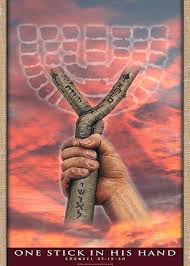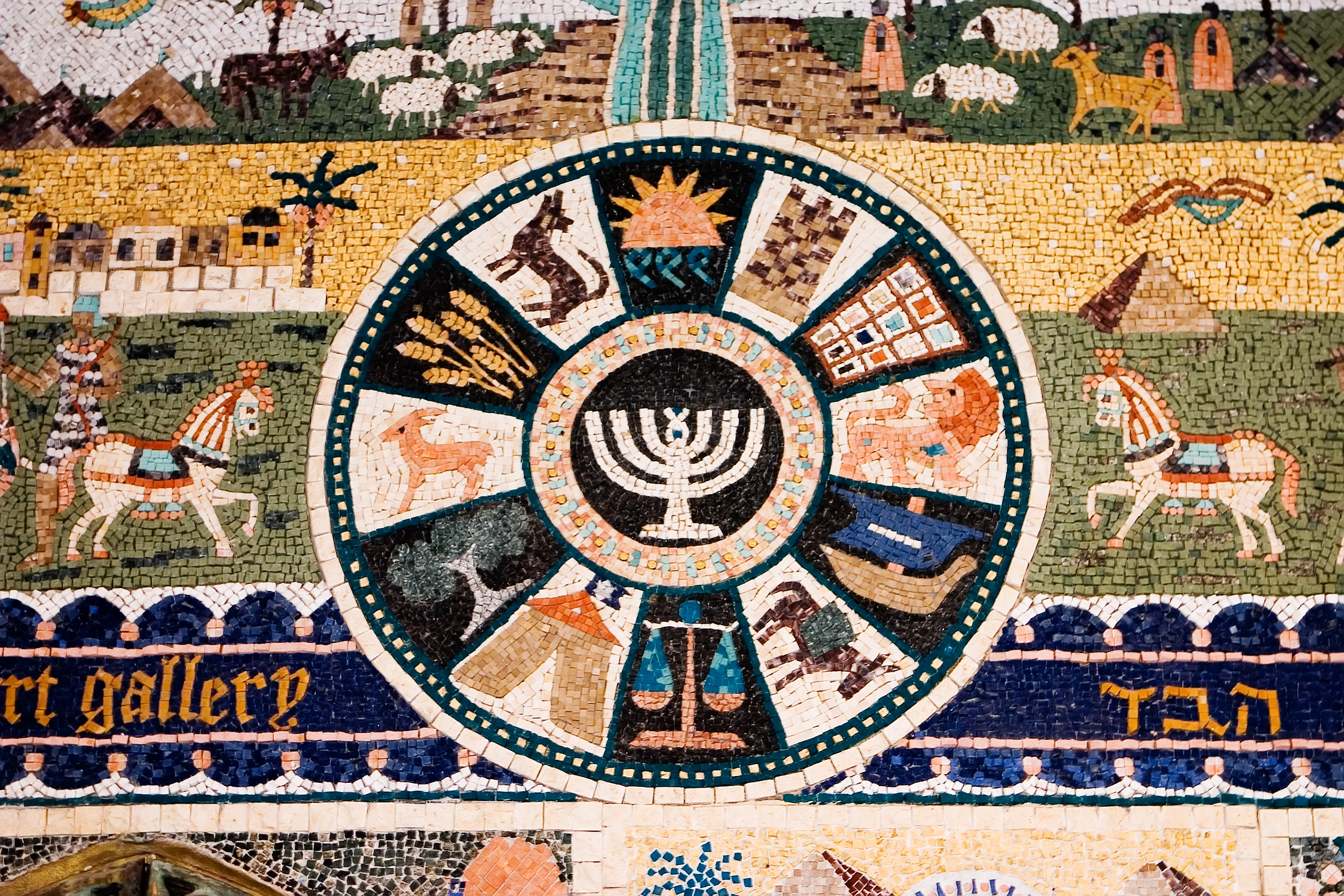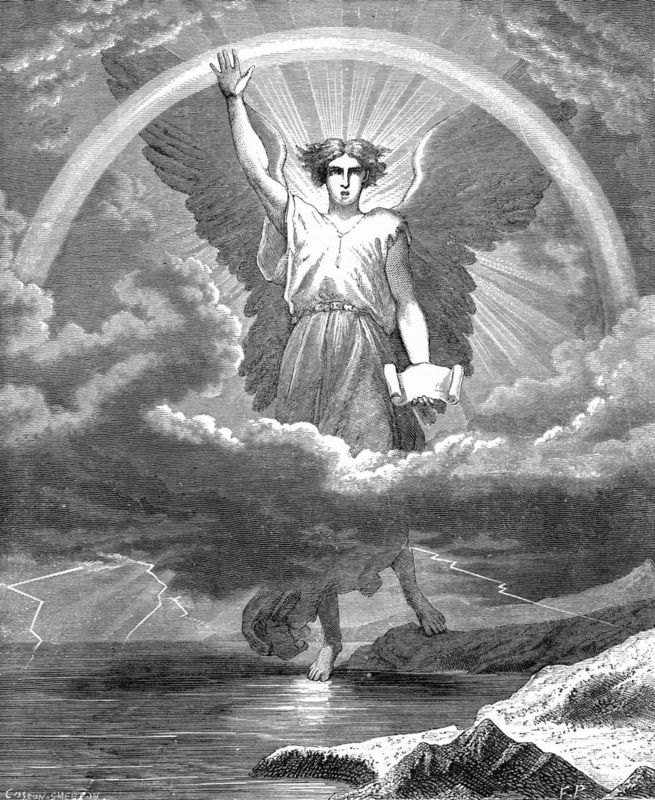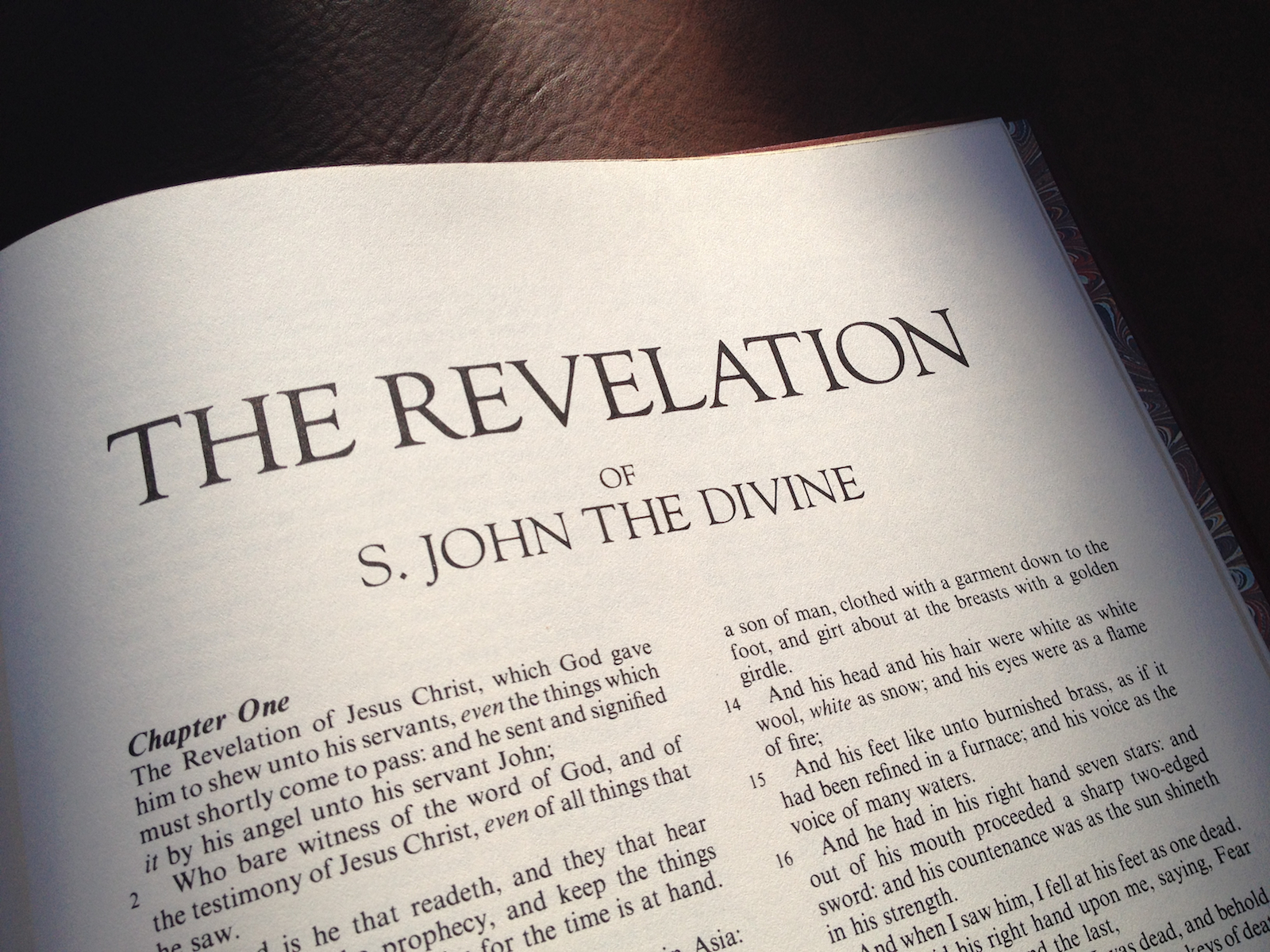The destiny of the saint is to be a king or a priest in the millennium under King Yeshua the Messiah, and the redeemed believer is now in training to fulfill their ultimate destiny. What does this mean and how are we to live and act in preparation for the future as glorified sons and daughters of YHVH Elohim? Watch and learn to discover what the Bible says about this wonderful truth! This is a stirring, provocative yet encouraging video.
Tag Archives: Millennium
My Notes on Revelation Chapters 20–22 on the Millennium and Eternity

Revelation 20
Revelation 20:1, Bottomless pit. (See notes at Deut 32:22; 2 Pet 2:4; Rev 9:1. Also see notes at Isa 14:18–21.)
Revelation 20:4, A thousand years. This is but one of six references in the Bible to the Millennium lasting for one thousand years. The other references are found in the surrounding verses (vv. 2, 3, 5, 6, 7). Even then, some biblical students still question the idea of the Millennium and categorize it as a NT concept only and, therefore, feel they can relegate it to the realm of the allegorical. An understanding of the prophetic implications of the seventh day Sabbath should settle this question once and for all. In traditional Jewish thought, the seven days of creation picture the time man will be on this physical earth. Six days (for six days or six thousand years) man does his own work, while on the seventh day (or one thousand years) he rests and fellowships with Elohim. This is a picture of the millennial rest, which the Jewish sages have long called the Messianic Era, which is yet to come. The Millennium is not uniquely a Christian or NT concept, but is rooted in Judaism going back before the Christian era. For example, the writer of Hebrews juxtaposes the Sabbath and the Millennium in Hebrews chapter seven when he compares Joshua taking the Israelites into the Promised Land with Yeshua taking the saints into the Sabbath, millennial rest of our spiritual inheritance.
Revelation 20:5, The rest of the dead. This phrase is a parenthetical thought. Before and after this phrase, the author is discussing those who will be part of the first resurrection, which occurs at Yeshua’s second coming. Later in the same chapter, John goes on to discuss what happens to the rest of the dead (vv. 12–13).
Revelation 20:7–21:1, Events after the Millennium. The events in these verses appear to be chronological and occur after the Millennium. In Rev 20:2ff John seems to be receiving a pre-millennial flashback vision. (See my discussion on these verses.)
Revelation 20:8, The four corners. These rebels who will inhabit the millennial earth have removed themselves as far as possible from Jerusalem, which is the seat of King Yeshua’s rule and is at the center of the earth.
Revelation 20:9, Fire came down from heaven. If the New Jerusalem, the seat of Yeshua’s millennial government, is hovering over the earthly Jerusalem during the Millennium, then this is the source of the fire or Yeshua’s judgment against the rebels who dare to defy his divine governance.
Revelation 20:10, The devil…lake of fire. (See notes at Deut 32:22; 2 Pet 2:4; Rev 9:1.)
Tormented forever.The devil as a spirit either can only be contained, but not destroyed meaning Elohim is not all-powerful, or, more likely, Elohim will allow the devil to exist, though in a place of torment, as an on-going example and testimony to his sovereign greatness and power over evil.
Continue readingThe Twelve Tribes of Israel Reunited
Genesis 46:1–7, The reuniting of Jacobs family—the twelve tribes of Israel. These verses recount the move of Jacob and his family to Egypt where they were reunited with Joseph and his family.
This prophetically foreshadows a time in the future, which the Jewish sages call the final redemption, which is to occur just prior to and at the coming of Messiah Son of David (Yeshua the Messiah) as he comes to establish the Messianic Era (or Millennium) on earth.
The Jewish sages teach that part of that final redemption includes the reunification of the two houses of Israel (i.e. the Messiah-loving Jews and Torah-loving Christians) into one kingdom under Messiah Son of David. Where do we find this prophesied in the Scriptures? (Read Ezek 37:15–28, which interestingly enough is this week’s Haftorah portion!) This speaks of the family reunification or reconciliation of Judah and Ephraim at Messiah’s return. (Hos 5:15–6:4; 1:11; Acts 3:21; Ezek 37:25). This will be a supernatural work of the Set-Apart Spirit of Elohim (Ezek 36:19–32).
After the reunification of the divided family, where did the reunited and reconciled family move to? (Read Gen 46:34.) Goshen was in the Nile River delta area and was and to this day is the prime farm land of Egypt. It was a veritable promised land compared to the arid regions of Canaan. Could Goshen be a tiny shadow-picture of the Millennium?
The Jewish sages have a sense that history for the people of Israel is continually repeating itself in cyclical patterns as YHVH works his purposes out among his people. He is constantly endeavoring to reveal his plan of redemption and reconciliation to his people—those who have eyes to see, and he is continually reaching out his loving hand of reconciliation to the next generations of Israelites.
The Israelites settling in Goshen is but one more picture of the cyclical pattern of redemption that we see YHVH working out in the pages of Scripture all pointing toward a final climax at the end of the age where all of the children of Israel will worship YHVH in spirit and in truth (John 4:23) under the rulership of King Yeshua the Messiah, Son of Joseph/David.
A Summary of Final Events in the Book of Revelation and the Fall Feasts
What happens after the return of Yeshua to this earth — after he has put down all of his enemies in battle (Zech 14:1–3; Rev 17:14; 19:11–21)? This we know. He shall set his feet on the Mount of Olives (Zech 14:4) even as he ascended from the same place (Acts 1:9–12), and YHVH-Yeshua shall become king over the earth (Zech 14:9). He shall be King of kings (Rev 17:14; 19:16) and rule with a rod of iron over the whole earth (Rev 12:5; 19:15) for one thousand years (Rev 20:2, 3, 4, 6, 7). This is commonly referred to as the Millennium. This is the earth that Yeshua declared that the meek would inherit (Matt 5:5).
A Quick Overview of the Millennium
What will the 1000 year-long Millennium be like? The Scriptures give us some insights into life on earth during this time.
- Elohim will live with his people. (Ezek 37:26–28)
- David will rule as King over Israel (Ezek 37:24–25)
- YHVH’s annual feast will be kept by all people (Ezek 46:3–6; cf. Col 2,16–17)
- YHVH’s government will be established on Mount Zion in Jerusalem: Torah will go forth from Mount Zion and the nations will go up to Mount Zion to worship YHVH in the house (temple) of YHVH (Mic 4:1–2)
- A Highway of YHVH, or a highway of holiness will lead to Zion. (Isa 35:8–10)
- Whether literal or spiritual, living waters will flow from Jerusalem and Yeshua’s throne. Water was flowing from under the threshold of the temple toward the east (Ezek 47:1; Zech 14:8)
- On the bank of the river there were very many trees on each side (Ezek 47:6–9)
- People will live to a very old age. (Isa 65:20)
- Crowds of people will flock to Jerusalem. (Zech 2:1–4; Isa 49:14)
- The temple in Jerusalem will be rebuilt. (Zech 6:15; 14:20–21; Hag 2:6–9)
- The Messiah will be king over the whole world. (Zech 6:9–13; Isa 11:1–5; Rev 20:6; 5:9–10)
- The nations which do not want to serve and obey YHVH will be destroyed. (Isa 60:12; Zech 14:16–19; Isa 9:5–7)
What Happens After the Millennium?
After the thousand years is completed, Satan the devil who has been bound in the bottomless pit (Rev 20:1–3) will be released briefly to test those on earth as to their faithfulness to King Yeshua (verses 7–8). The devil will then be cast into the lake of fire forever (verse 10).
Next is the final judgment day — commonly called the great white throne judgment. At that time, all the dead, and any others who have died in Yeshua and have yet to receive their Continue reading
It there a one-thousand year Millennium?
Revelation 20:4, A thousand years. This is but one of six references in the Bible to the Millennium lasting for one thousand years. The other references are found in the surrounding verses (vv. 2, 3, 5, 6, 7). These are more than enough references to meet the biblical criteria of establishing a truth in the mouth of two or more witnesses.
Even then, some biblical students still question the idea of the Millennium and categorize it as a NT concept only and, therefore, feel they can disregard it. This is a shame and shows naive ignorance with regard to the Word of Elohim.
An understanding of the prophetic implications of the seventh day Sabbath should settle this discussion once for all. In Hebraic thought, the seven days of creation picture the time man will be on this physical earth. Six days (for six days or six thousand years) man does his own work, while on the seventh day (or one thousand years) he rests and fellowships with Elohim. This is a picture of the millennial rest, which the Jewish sages have long called the Messianic Era, which is to come.
The Millennium is not uniquely a Christian or NT concept, but is rooted in Judaism going back before the Christian era. The writer of Hebrews makes reference to this in Heb 7 when he compares Joshua taking the Israelites into the Promised Land with Yeshua taking the saints into the Sabbath, millennial rest of our spiritual inheritance.
From My Bible Commentary on Revelation 20, 21 and 22
Shalom everyone!
In my as yet unpublished commentary on the whole Bible, I have about a thousand pages long commentary on the NT or Testimony of Yeshua alone. Parts and pieces of this I share from time to time on this blog.
For fun and, hopefully, to bless a few readers, I decided to share my commentary notes on Revelation chapters 20 to 22. These notes are unpublished and not formally edited, so if you find any typos, kindly let me know.
I hope this is a blessing to someone and will get you thinking a little! This ought to keep some of you going for awhile! 😉
Natan
Revelation 20
Revelation 20:1, Bottomless pit. (See notes at Deut 32:22; 2 Pet 2:4; Rev 9:1. Also see notes at Isa 14:18–21.)
Revelation 20:4, A thousand years. This is but one of six references in the Bible to the Millennium lasting for one thousand years. The other references are found in the surrounding verses (vv. 2, 3, 5, 6, 7). These are more than enough references to meet the biblical criteria of establishing a truth in the mouth of two or more witnesses. Even then, some biblical students still question the idea of the Millennium and categorize it as a NT concept only and, therefore, feel they can disregard it. This is a shame and shows naive ignorance with regard to the Word of Elohim. An understanding of the prophetic implications of the seventh day Sabbath should settle this discussion once for all. In Hebraic thought, the seven days of creation picture the time man will be on this physical earth. Six days (for six days or six thousand years) man does his own work, while on the seventh day (or one thousand years) he rests and fellowships with Elohim. This is a picture of the millennial rest, which the Jewish sages have long called the Messianic Era, which is to come. The Millennium is not uniquely a Christian or NT concept, but is rooted in Judaism going back before the Christian era. The writer of Hebrews makes reference to this in Heb 7 when he compares Joshua taking the Israelites into the Promised Land with Yeshua taking the saints into the Sabbath, millennial rest of our spiritual inheritance.
Revelation 20:5, The rest of the dead. This phrase is a parenthetical thought. Before and after this phrase, the author is discussing those who will be part of the first resurrection, which occurs at Yeshua’s second coming. Later in the same chapter, John goes on to discuss what happens to the rest of the dead (vv. 12–13).
Revelation 20:7–21:1, Events after the Millennium. The events in these verses appear to be chronological and occur after the Millennium. In Rev 20:2ff John seems to be receiving a f pre-millennial flashback vision. (See my discussion on these verses.)
Revelation 20:8, The four corners. These rebels who will inhabit the millennial earth have removed themselves as far as possible from Jerusalem, which is the seat of King Yeshua’s rule and the at the center of the earth.
Revelation 20:9, Fire came down from heaven. If the New Jerusalem, the seat of Continue reading





